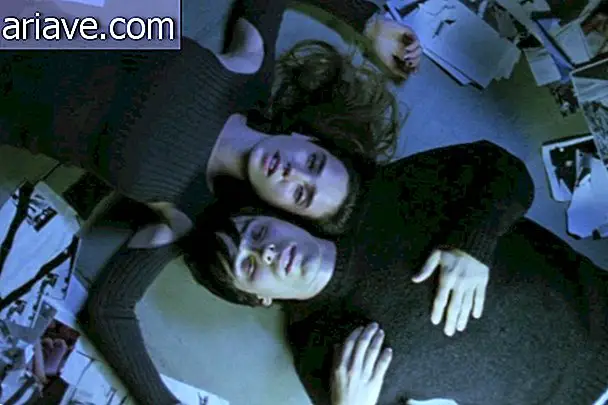20 years of the Real Plan: see 10 curiosities about the national currency
What do you buy with a real coin today? In 1994, the year in which the Real Plan was implemented, during the government of Itamar Franco, a R $ 1 bill bought a kilo of chicken. With that same value it was still possible to buy about eight French breads and still have a nice coffee.
And the Real Plan is turning 20 years old today, July 1st. That year Rubens Ricupero had replaced Fernando Henrique Cardoso at the Ministry of Finance. FHC, in turn, one of the Plan's main creators, was elected president in October 1994 (the first of two terms), continuing the project that changed Brazil for the better in the economy.
Stability

Months before the Plan was officialized, the URV, the Real Value Unit, was introduced, with Provisional Measure No. 434, to preserve purchasing power, avoiding shock measures such as confiscation of savings and breach of contracts. It was as an essential preparation for the success of the real currency.
Finally, the implementation of the real ended the rampant inflation that plagued the country and the constant changes of currencies, expanding the purchasing power of the population, consolidating greater trade openness with the foreign, among other changes.
Since then, 20 years have passed, and with them an inevitable devaluation of our currency has been taking place, but the real remains a symbol of our country's largest (and most successful) economic reform. To remember the trajectory since its creation, check out 10 curiosities about the Real Plan in Brazil:
1 - Remember we talked about buying eight breads and a coffee with only one dollar? Well, this acquisition was made by then President Fernando Henrique Cardoso in a bakery in Brasilia in 1996, when the Real Plan was completing two years. Oh, and 0.10 cents left to buy some candy later.
2 - After the implementation of the Real Plan, our currency equaled in value with the dollar in a process adopted by the government called the “currency anchor”, generating an explosion of Brazilian tourism to the United States. At one time, the real was worth even more than the dollar, causing hawkers accustomed to Paraguay to change course to Miami.

3 - Inflation that caused product prices to be rescheduled weekly (or even daily at certain times) went from about 1, 000% at a single-digit rate in 1996 alone.
4 - Yogurt, along with chicken, was also one of the real purchasing power icons. With the new currency, the consumption of this dairy became much more accessible to Brazilians. So much so that the sale grew 86% in four years of Real Plan, according to a balance of the Ministry of Finance.

5 - Do you or anyone in your family have a guarded royal banknote? Yeah, you can even make some money with it now. It was in 2005 that this note stopped being issued and, in 2012, many people were already selling this note in virtual auctions for up to one hundred reais. It is still possible to see some for sale, but the price paid for it usually reaches 15 or 20 reais at most. It's good, isn't it?

6 - Who remembers the animal that had on the back of the note of a real? It was a hummingbird. $ 5: a heron, $ 10: macaw, $ 50: jaguar, $ 100: grouper, $ 2: turtle, and $ 20: a golden lion tamarin.
7 - New Brazilian Real banknotes were launched in 2010, and each value has a different size, facilitating the use of banknotes by the visually impaired. Security updates and enhancements were also released in 2012 and 2013.

8 - Do you know how much the minimum wage was in 1994, when the Real Plan was launched? It was only $ 32.79! Since then, there has been a gross growth of over 1, 000% and today it is $ 724.00. However, with the inflation discount of this period of time, the real salary increase was 146%.
9 - The Brazilian people saw the economy change with the much more constant and valued use of currencies. So much so that, after the Real Plan was launched, the use (and sale) of purses increased dramatically. At the time of implementation of the plan, all coins were very similar, being distinguished only by the engravings and diameter. Over the years, they have changed and today each one looks quite different from each other.

10 - The notes of the real were also targets of counterfeiters, especially the note of a real, which was transformed into a 100 reais banknote by criminals. Taking advantage of the similarity of colors between the two notes, the counterfeiters washed the notes of a real with bleach to achieve the desired color and then altered the layout. The Central Bank has changed the watermark of the notes of one real for tampering no more.
Imagine at the Cup?

Yes, there was a real celebration for the World Cup in Brazil. In January 2014, the Mint launched a series of commemorative currencies for this event. There were nine special 2014 FIFA World Cup Brazil coins: one gold, two silver and six cupronickel.
According to the Mint, the gold option alludes to the Cup and the moment of the goal. One of the silver coins features the Official Cup Mascot (our famous Fuleco), and the other pays tribute to the competition's twelve host cities. However, these coins were not nationally distributed, as they were for sale at Banco do Brasil and Banco Central.











